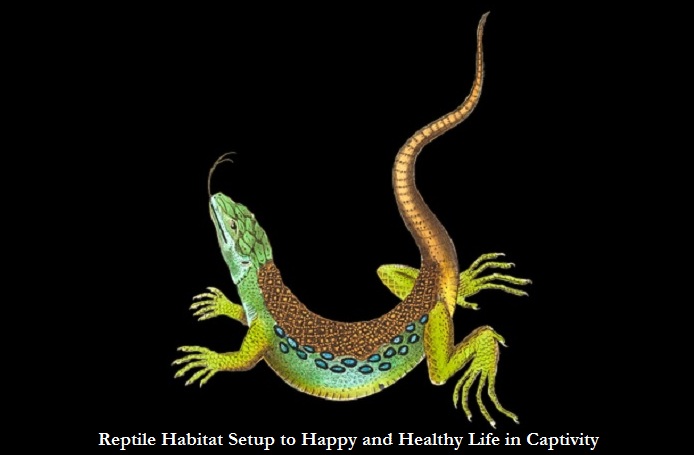You have to think about a reptile habitat setup if you want to keep reptiles in your house. Creating a suitable habitat for reptiles is crucial, especially for their well-being and longevity. A well-designed one not only mimics their natural environment. But also provides the necessary conditions for their physical or mental health.

Creating an Ideal Reptile Habitat Setup
Reptiles are fascinating creatures that make captivating pets due to their unique characteristics and also diverse habitats. These cold-blooded vertebrates are popular for their scaly skin, which sets them apart from other animal classes.
Reptiles exhibit remarkable adaptability, with their ability to thrive in various environments. Such as from deserts and grasslands to forests and aquatic.
One defining characteristic of reptiles is their reliance on external heat sources to regulate body temperature. This trait makes them popular as pets, as owners can create environments that mimic reptile habitat setup.
When considering reptiles as pets, it’s crucial to understand the specific needs of different species. Some popular choices include geckos, snakes, turtles, and bearded dragons. These animals require proper enclosures with temperature-controlled zones, suitable substrates, and also adequate hiding spots. There are several criteria that you must fulfill to get the ideal habitat.
1. Choosing the Right Enclosure
Select an enclosure that suits the size and specific needs of your reptile. Consider factors such as ventilation, size, and material. Ensure it allows for easy cleaning and also maintenance.
Another quite important thing is to make sure you choose a tank that can be locked properly. Include hiding spots and enriching elements like rocks, branches, or plants. This provides a sense of security and stimulates natural behaviors.
2. Substrate Selection
Choose an appropriate substrate that imitates the reptile habitat setup. For example, desert-dwelling reptiles might benefit from sand, while forest species may thrive on coconut coir or bark. Ensure these substrates are as they are needed.
This is no exception when keeping chameleons. Make sure to add bushes. This is because chameleons like to live in trees or bushes. That way, the chameleon can live in its natural habitat.
Don’t forget to add a little soil too. This is because some chameleons live on the ground. Chameleons can be more comfortable living there.
However, for Jordan Harris on his personal YouTube channel, instead of sand, he recommends natural powder. Both from coconut fiber and milled wood. According to his experience when keeping geckos and reptiles, both are animals that like to lick the surrounding area. So if swallowed, the natural powder will not trigger impaction.
3. Temperature Gradient
Establish a temperature gradient within the enclosure. Provide a basking area with a heat source. Such as a heat lamp or special tank heater. You can also ensure a cooler area for the reptile to regulate its body temperature.
Many reptiles require UVB lighting to synthesize vitamin D3, essential for calcium metabolism. Invest in high-quality UVB and follow recommended exposure times based on your reptile’s species.
4. Humidity Control
Monitor and regulate humidity levels according to your reptile habitat setup. Some require high humidity, while others need a drier environment. Use a hygrometer to keep track of humidity levels.
5. Water Source and Nutritional Considerations
Then, you must provide a clean water source for drinking and bathing. Ensure it is easily accessible and also large enough for the reptile to soak if needed. Besides that, tailor the diet to meet your reptile’s nutritional needs. Research the specific dietary requirements of the species and include a variety of food items for a well-balanced diet.
6. Regular Cleaning and Maintenance
Keep the reptile habitat setup clean by removing waste, replacing substrate, and also disinfecting surfaces regularly. This helps prevent the growth of harmful bacteria or maintains a healthy environment.
7. Observation and Adjustment
Don’t forget to observe your reptile’s behavior and health regularly. Make necessary adjustments to the habitat setup based on any changes in their behavior, appetite, or physical condition.
These are some of the things you need to pay attention to when creating a reptile habitat. A well reptile habitat setup is not only aesthetic. But it also plays a crucial role in the overall health and happiness of your pet. /Edit



